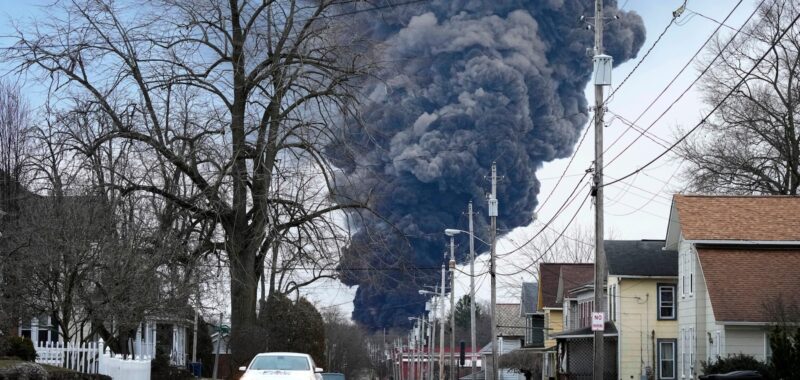People who live near East Palestine, Ohio, can now get $25,000 apiece for any injuries they sustained after last year’s Norfolk Southern freight train derailment on top of whatever money they get for property damage as part of the $600 million class-action settlement.
The lawyers who negotiated the deal have increased the estimated injury payment from the original $10,000 because they now have more information about how many claims there will be. One of the plaintiffs’ attorneys, Adam Gomez, said the original estimate was conservative to ensure that no one will receive less than they were promised as part of the settlement.
“We are not looking to over promise and under deliver in any way shape or form to the class,” Gomez said.
The lawyers plan to hold a Zoom call for residents Thursday evening to explain why the health payment is increasing and why they believe it is the right amount.
That payment for health problems is on top of the up to $70,000 households can receive for property damage. But to get the injury payment, residents who live within ten miles of where the train derailed have to agree before the Aug. 22 deadline to give up the right to sue the railroad or anyone else involved down the road even if they develop cancer or other serious health conditions later.
The biggest property damage payments of $70,000 per household are limited to people who lived within two miles of the derailment. The payments get much smaller toward the outer edge of the 20-mile radius that’s covered in the settlement.
The personal injury payments are only available to people who lived within ten miles of the derailment.
For the folks in East Palestine who are worried about the possibility of developing cancer or another serious health condition down the road like Jami Wallace even $25,000 seems way too low. She thinks residents’ health claims are likely worth way more than that.
Gomez said that the settlement is primarily designed to address only the short-term health impacts that residents have seen since the derailment because the courts won’t allow them to try to cover future health problems.
But the lawyers hired their own toxicologists and testing experts to try and determine what kind of long-term risks the community faces from the cocktail of chemicals that spilled and burned after the train derailment along with the vinyl chloride that was intentionally released and burned three days after the crash.
Gomez said the evidence they gathered about the chemicals that spilled and how long people were exposed to them suggests there may not be a rash of terrible illnesses in the future.
“In fact, we do not think that there is, support in that data for any significant increase in the number of additional cancers or other illnesses in East Palestine or the surrounding communities,” Gomez said.
But Wallace and others in town may not be ready to believe that because of what she has heard from other chemical experts and the doctors who are studying the health problems residents have reported.
“I have letters written from multiple toxicologists that have credentials longer than your arm that’ll say there’s definitely a huge health risk in the future,” Wallace said.
But Gomez cautioned that anyone who opts out of the class action settlement now should consider the difficult road they would face in bringing their own lawsuit later. He said it will likely be difficult that something like cancer was caused by the derailment because the disease can be caused by other factors.
The National Transportation Safety Board said that the East Palestine derailment, which was the worst rail disaster in the past decade, was caused by an overheating bearing on one of the cars on the train that wasn’t detected soon enough by the network of detectors the railroad has alongside the tracks.
The head of the NTSB also said that the five tank cars filled with vinyl chloride didn’t need to be blown open to prevent an explosion because they were actually starting to cool off even though the fire continued to burn around them.

